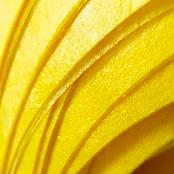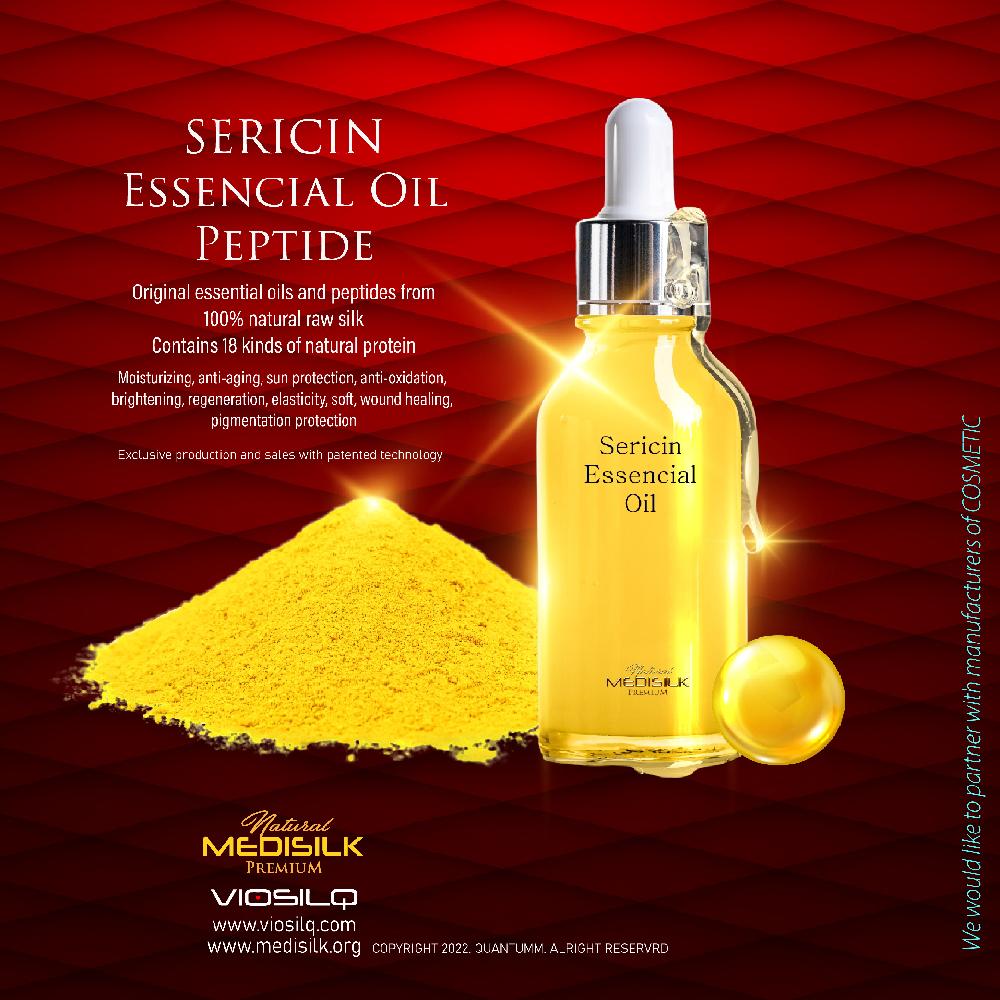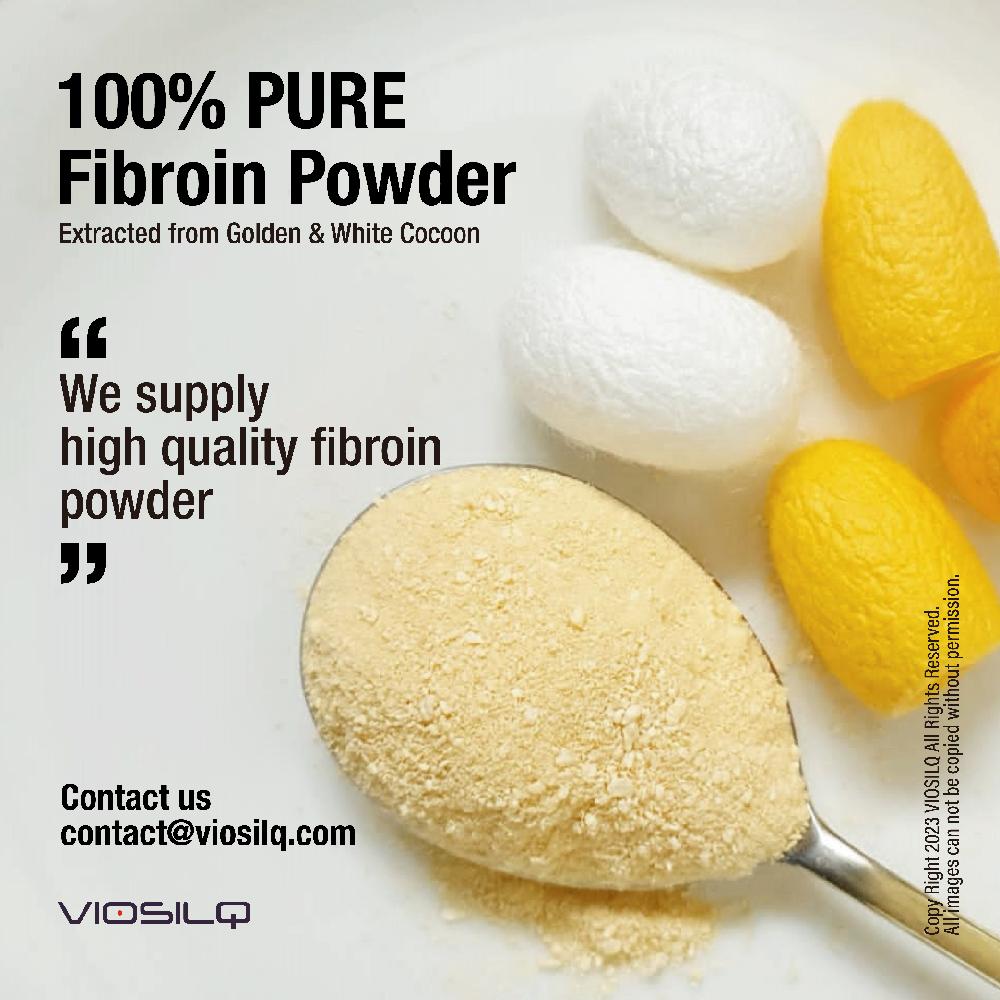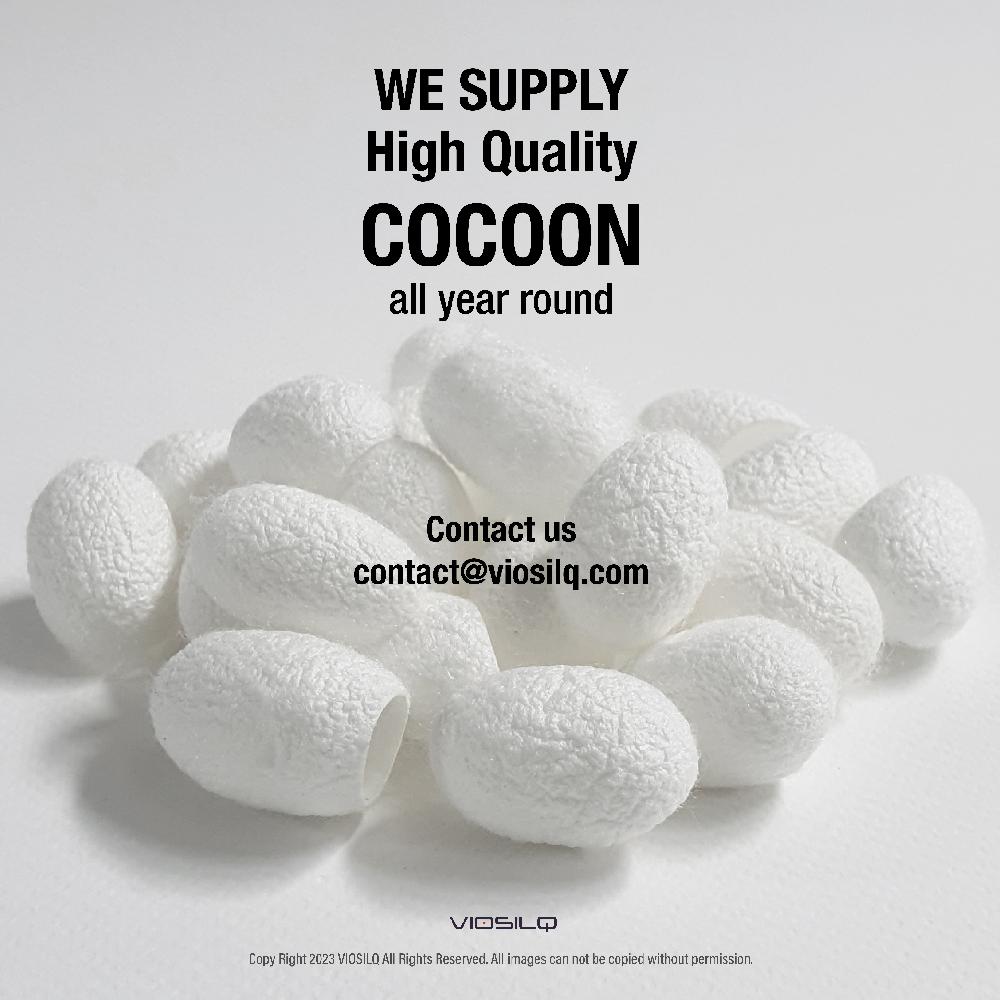VIOSILQ Silk Sericin Peptide, Powder
-
Payment
T/T
-
MOQ
100 Kilogram (kg)
-
Supply Ability
3,000 Kilogram (kg) per One-Time
-
Supply Details
Customization Sample Order
negotiable
-
Country of sale
World Wide, Americas, Europe, Middle East, Asia
-
PRICE
-
FOB
Depend on quantity
-
ITEM SPECIFICS
-
Brand
Model VIOSILQ WHITEVIOSILQ
-
origin
Republic of Korea
-
Size(Capacity)
1kg
-
Color
Light Yellow, white
-
Condition
Premium Quality
-
Material
Raw Silk
-
Weight
1kg
-
Function
Basic materials for cosmetics and bioengineering
PRODUCT DESCRIPTION
Sericin Peptide
A Promising Sustainable Biomaterial for Biomedical, Cosmetic, Pharmaceutical, Fabric, and Food Applications
Silk is a natural composite fiber composed mainly of hydrophobic fibroin and hydrophilic sericin, produced by the silkworm Bombyx mori. In the textile industry, the cocoons of B. mori are processed into silk fabric, where the sericin is substantially removed and usually discarded in wastewater. This wastewater pollutes the environment and water sources. However, sericin has been recognized as a potential biomaterial due to its biocompatibility, immunocompatibility, biodegradability, anti-inflammatory, antibacterial, antioxidant, and photoprotective properties. Moreover, sericin can produce hydrogels, films, sponges, foams, dressings, particles, fibers, etc., for various biomedical and pharmaceutical applications (e.g., tissue engineering, wound healing, drug delivery, cosmetics). Given the severe environmental pollution caused by the disposal of sericin and its beneficial properties, there has been growing interest in upcycling this biomaterial, which could have a strong and positive economic, social, and environmental impact.
Sericin peptide extracted from pure silkworm cocoons is produced through the latest production process and can be used in various fields including the bioengineering industry and biocosmetics.
VIOSILQ produces higher levels of sericin than the sericin extracted from regular silkworm cocoons, and it is produced through a high-pressure water jet process rather than chemical hydrolysis. This is the same process used to produce powdered milk or food powder.
1. Drug Delivery
Scaffolds, films, hydrogels, fibers, foams, spheres, capsules, and microneedles, among others, can be used for local and systemic drug delivery. Since sericin has an amphiphilic character (polar side chains and hydrophobic domains), it can be used as a vehicle because it easily binds charged therapeutic molecules or hydrophobic and hydrophilic drugs.
2. Tissue Engineering
Sericin-based scaffolds can be used as drug delivery systems and as hydrogels, films, sponges, and others for tissue engineering purposes.
3. Food
There is growing concern over the use of plastics in food packaging, as it increases plastic waste in the environment. Sericin, a silk protein that is discarded in large quantities in the sericulture and textile industries during the process of manufacturing silk from silk cocoons, can be explored for application as a component of functional foods and food items in food packaging and other food sectors. Thus, recycling can reduce economic costs and environmental waste. Sericin extracted from silk cocoons has several useful amino acids such as aspartic acid, glycine, and serine. Likewise, sericin has strong hydrophilicity, which gives it effective biological and biocompatibility properties including antibacterial, antioxidant, anticancer, and antityrosinase properties. Sericin has been proven to be effective in the production of films, coatings, or packaging materials when used in combination with other biomaterials.
4. Cosmetic
Sericin can be used as an additive in high-end cosmetics. The amino acid component of sericin provides excellent moisture absorption and retention to the skin. Sericin effectively inhibits the activity of tyrosine and the formation of melanochrome and provides hair care and repair effects.
The General Action of Silk Sericin on the Skin
1. Soluble and soluble in water
Sericin, the main ingredient, is water-soluble and dissolves well in water, which has excellent adsorption to the skin and delivers a large amount of protein contained in sericin to the skin as it is.
2. Excellent hygroscopicity
Silk's hygroscopicity is 1.4 times that of cotton, and silk absorbs more moisture than cotton and releases moisture at a faster rate than cotton.
3. Excellent heat retention
Silk contains a lot of air because it is an aggregate of microfibrils because this air does not conduct heat well. By retaining a lot of air with low thermal conductivity, heat retention is naturally good.
4. No static electricity
It prevents an excessive increase in blood alkalinity when the silk mask of this product is attached to the skin as it does not generate static electricity, and the skin receives less stress.
5. Increase skin cell vitality
Contains essential amino acids: Silk, which is composed of protein, is composed of more than 18 amino acids, which are essential for human skin and provide vitality to human skin cells.
6. Similar to human skin
The sericin and fibroin proteins covering the surface of the thread are composed of amino acids very similar to NMF, the natural moisturizing factor of the human epidermis.
Collagen, which occupies 90% of the dermal component located inside the human epidermis, is a protein that accounts for one-third of the total protein possessed by mammals and contains 16 amino acids, which are very similar to sericin and fibroin.
7. Treats various skin diseases
Through clinical trials, it has been found that the effect of treating skin diseases is excellent as shown below.
8. Increase skin cell vitality and prevent skin aging
-With a large number of collagen components (Anti-aging, Skin reproduction, Elasticity skin), when silk touches the skin, it promotes the vitality of skin cells, inhibits the hardening of blood vessels, and prevents aging. The collagen component contained in it makes skin tissue, provides moisture, and prevents aging. It also prevents wrinkles and sagging skin.
9. UV protection and moisturizing ability
Moisturizing: The silk ingredient that sticks to the skin’s surface maintains the moisture required by the skin, so it makes the skin shiny with excellent moisturizing power.
UV protection: High content of Hydro Amino Acid enzyme inhibits the activity of Tyrosine, which is deeply involved in melanin production and browning, and blocks UV rays, thereby protecting against blemishes such as freckles and blemishes.
10. Main Ingredients
It has higher sericin content than normal silkworms (Sericin content: not less than 650mg/General silk: not more than 300mg).
Sericin has a Natural Moisturizing Factor (NMF) and contains all 16 kinds of protein that the human skin needs.
The main protein components include serine, tyrosine, alanine, leucine, cysteine, threonine, proline, glutamic acid, aspartic acid, lysine, isoleucine, histidine, valine, hydroxylysine, phenylalanine, hydroxyproline, etc.
11. Product Production
- Annual production and supply
- Customized production possible
We are ready to supply premium-quality products that customers want by OEM and ODM and we can develop new products in collaboration with clients. Please do not hesitate to contact us comfortably now.
contact@viosilq.com
R&D CERTIFICATE
-
- MSDS
PAYMENTS DETAILS
This supplier supports payments for offline orders
- Telegraphic Transfer : T/T
- Name : KIM TAEIL
SHIPPING
Shipping from :
Republic of Korea
- 20 Samseong-ro 103-gil, Gangnam-gu, Seoul (06155)
QUANTUMM CO. LTD.
The person in charge
TAEIL KIMAddress
20 Samseong-ro 103-gil, Gangnam-gu, Seoul (06155)
QRCODE
QUANTUMM CO. LTD.
Introduction
Quantumm Co. Ltd. is a world leader in the exclusive production of non-woven raw silk sheets using silkworms. Under the brand VIOSILQ, the production plant is located in Chiang Mai, Thailand, featuring a mulberry farm and year-round production facilities. This project is supported by the Queen Sirikit Department of Sericulture under the Ministry of Agriculture and Cooperatives of Thailand. VIOSILQ can be used as a fundamental material for bioengineering, smart fabrics, cosmetics, and daily necessities.
1. For the cosmetic:
-Features: 100% natural raw silk without chemical additives contains 16 kinds of living natural proteins that make the skin clear and smooth and help heal wounds.
-How to use: In the case of facial masks, it can be used alone after soaking in hot water without adding essence, and can be reused more than 10 times. Water-soluble proteins dissolved in hot water melt on the surface and naturally permeate the skin.
No side effects on the skin (Completed skin clinical trials).
-Products: Facial masks, belly masks, breast patches, sericin peptides.
2. For the bioengineering:
-Silk used as the basic material for bioengineering and can be supplied year-round.
-Products: Fibroin fibers, sericin peptides, silkworm cocoons.
3. For the smart fabric:
-Silk used as the basic material for smart fabric and can be supplied year-round.
-Products: Fibroin fibers, silkworm cocoons.
4. For the daily necessities:
-Features: Processed from 100% natural raw silk sheets, harmless to the human body. Sustainable products and biodegradable in nature.
-Products: Women's sanitary pads (need to be developed with partners), diapers (need to be developed with partners), sanitary tissues, coffee filters, tea bags.
-
- Business Type :
- Manufacturer
-
- Main Product :
- Natural Nonwoven Raw Silk Sheet
-
- Established :
- 2012-11-12
-
- Total Annual Revenue :
- Less than 100 million (KRW)
-
- Total Employees :
- Less than 5
R&D CERTIFICATE
-
- Dust collection efficiency first test
- GBT, KOREA, KFDA STANDARD
- 15MAY2020
- 인증서보기
-
- Dust collection efficiency second test
- GBT, KOREA, KFDA STANDARD
- 17JUL2020
- 인증서보기
-
- Air permeability test
- THTI, THAILAND, N STANDARD
- 14MAY2020
- 인증서보기
-
- Formaldehyde test
- THTI, THAILAND, N STANDARD
- 14MAY2020
- 인증서보기
-
- Filtration efficiency test(0.1um)
- RUEE, THAILAND, N STANDARD
- 18APR2020
- 인증서보기
-
- Filtration efficiency test(0.3um)
- RUEE, THAILAND, N STANDARD
- 18APR2020
- 인증서보기
-
- COA
- 인증서보기
-
- MSDS
Please suggest a variety of your ideas such as design, impact, enhancements, etc
Captcha Required
Please enter the text on the left image to prevent automatic input.
0 / 4000
질문이 없습니다.
CUSTOMER REVIEWS (0)
TRADE EXPERIENCE
-
- Total revenue
- Less than 100 million (KRW)
-
- Total export revenue (previous year in USD)
-
- Number of foreign trade employees
- Less than 5
COMPARISON TO SIMILAR ITEMS more
- No Items
- supplier level
-
 PLATINUM
PLATINUM
- QUANTUMM CO. LTD. Seller's Store
- Seller's Store url
- Response Level
★ ★ ★ ★ ★

- Supplier Level
★ ★ ★ ★ ★

- Transaction Level
★ ★ ★ ★ ★
















